Summer Travels Italy Part II
Summer Travels Italy Part II
Summer Travels Italy Part II: Here is the second church; this is the Duomo di Mantova–The Cathedral of Mantova. This church is dedicated to St. Peter and is the official seat of the Bishop of Mantova.
1Zerwas, Ashley. Duomo Mantova Fuori 1. June 17th, 2016. Personal Collection, Mantova, Italy.
Although this building sits on the site of an older, Early Christian era building, the current facade that we see was commissioned and overseen by Bishop Antonio Guidi di Bagno between 1756 and 1761 A.D.
2Zerwas, Ashley. Duomo Mantova Fuori 2. June 17th, 2016. Personal Collection, Mantova, Italy.
3Zerwas, Ashley. Duomo Mantova Fuori 3. June 17th, 2016. Personal Collection, Mantova, Italy.
While the front may be more modern, this visible side remains the red brick and Gothic style of the renovations that were done between 1395–1401 A.D. This work had been done by the architect Masegne Pier Paolo and Venetian sculptor Mesgne Jacobello.
4Zerwas, Ashley. Duomo Mantova Inside 1. June 17th, 2016. Personal Collection, Mantova, Italy.
5Zerwas, Ashley. Duomo Mantova Inside 2. June 17th, 2016. Personal Collection, Mantova, Italy.
6Zerwas, Ashley. Duomo Mantova Ceiling. June 17th, 2016. Personal Collection, Mantova, Italy.
7Zerwas, Ashley. Duomo Mantova Organ. June 17th, 2016. Personal Collection, Mantova, Italy.
The interior had been damaged by fire and was renovated by Giulio Romano in 1545 under Cardinal Ercole Gonzaga. The current décor, however, is in the Baroque style, showing that decoration happened again after the renovation.
8Zerwas, Ashley. Duomo Mantova Altar 1. June 17th, 2016. Personal Collection, Mantova, Italy.
9Zerwas, Ashley. Duomo Mantova Altar Close. June 17th, 2016. Personal Collection, Mantova, Italy.
10Zerwas, Ashley. Duomo Mantova Altar Side. June 17th, 2016. Personal Collection, Mantova, Italy.
11Zerwas, Ashley. Duomo Mantova Altar Side Close. June 17th, 2016. Personal Collection, Mantova, Italy.
The Beautiful Altar and Its Adornments
Here is the beautiful altar, covered, of course, with fair linen. The fair linen is a white linen cloth that is laid over the altar, so as not to distract from the beautiful construction underneath. Its edges, however, do hang down past the sides of the altar, extending down to within 3 or 4 inches from the floor on either end. The entire altar fair linen has a lovely 1 to 2″ wide lace trim edging. The simplicity of the white linen and simple lace adds a nice contrast to the rich colors, materials, and textures of the other chancel furnishings. To use a heavily or ornately embroidered later hanging would be overkill in such a surrounding as this.
One thing to be aware of, especially with an altar that is wider than this altar. The combination of the width and the additional length of the fair linen that hangs down the sides can result in some ripples as seen in the photo of the fair linen. Linen is subject to “change” due to conditions such as moisture and humidity in the air. Linen is very absorbent, and being so, what may go out on the altar as a pristine, pressed fair linen, flat and smooth with not a wrinkle or ripple in sight, may be subject to change in an instant with a change in the weather or humidity. As long as one is willing to understand and accept this as the “nature” of the fiber, one can live and be happy with the changes in the linen.
12Zerwas, Ashley. Duomo Mantova Font 1. June 17th, 2016. Personal Collection, Mantova, Italy.
13Zerwas, Ashley. Duomo Mantova Font 2. June 17th, 2016. Personal Collection, Mantova, Italy.
14Zerwas, Ashley. Duomo Mantova Side Chapel 1. June 17th, 2016. Personal Collection, Mantova, Italy.
15Zerwas, Ashley. Duomo Mantova Side Chapel 2. June 17th, 2016. Personal Collection, Mantova, Italy.
16Zerwas, Ashley. Duomo Mantova Side Chapel 3. June 17th, 2016. Personal Collection, Mantova, Italy.
Inspiring Ecclesiastical Beauty
And here are the Baptismal font and portraits that hang above the altars in the various side chapels. It is wonderful to examine a church and see the layers of history built so closely together. Yet the history in such churches is not complete, but still alive and being built.
Beautiful ecclesiastical vestments, church art, and church architecture are not reserved for world-renowned cathedrals. Beauty is often found in places where worship still takes place on a healthy and active basis. This is because precious treasures can be found still in their original use instead of cased up–as if entombed–for tourists to view for thirty seconds before moving past. Tourists truly lack a sense of reverse and they allow this attitude to perfume an entire church, making it hard to sit and enjoy the beauty that was so carefully devised in honor of the faith. As a disclaimer, I heartily adore the bigger Basilicas, most especially in Firenze, but they feel more like museums because they have lost that active sense of original purpose.
~Nihil Sine Deo~
Be sure to visit our online store front Ecclesiastical Sewing where you may shop for Liturgical Fabrics, altar linen fabrics, church vestment-making patterns, liturgical machine embroidery designs, church vestment trims and notions and so much more. You may also find us on Ecclesiastical Sewing on Facebook, Twitter, and Pinterest. Sign up for our mailing list at the bottom of the page on our online store front and receive a free copy of our Small Linens Booklet as our way of saying thank you for following along.
Bibliography
“Duomo.” Geoplan: Cartografia e Mappe D’Italia. Web. 2016. http://www.geoplan.it/luoghi-interesse-italia/monumenti-provincia-mantova/cartina-monumenti-mantova/monumenti-mantova-duomo.htm
“Duomo di Mantova.” Mantova Notizie. Web. 2016. http://www.mantovanotizie.com/guida-mantova/duomo
Summer Travels and Unexpected Surprises!
More Surprises on Summer Travels
Memories and Vestment Photos from Summer Travels

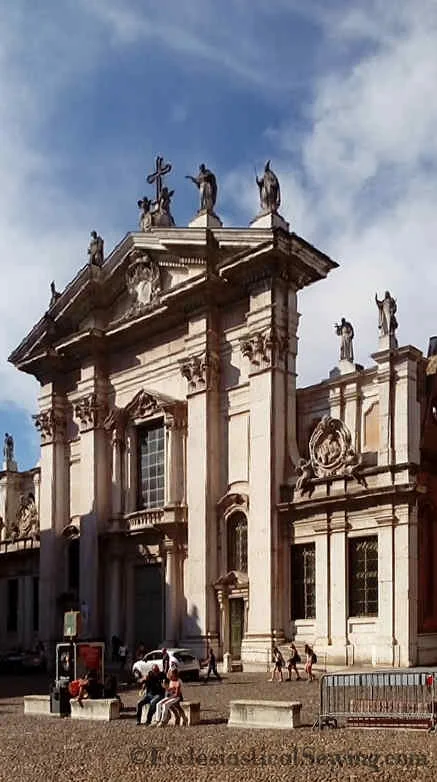
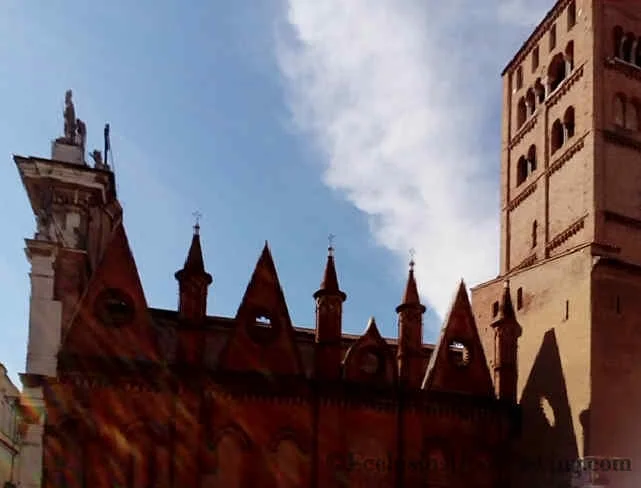
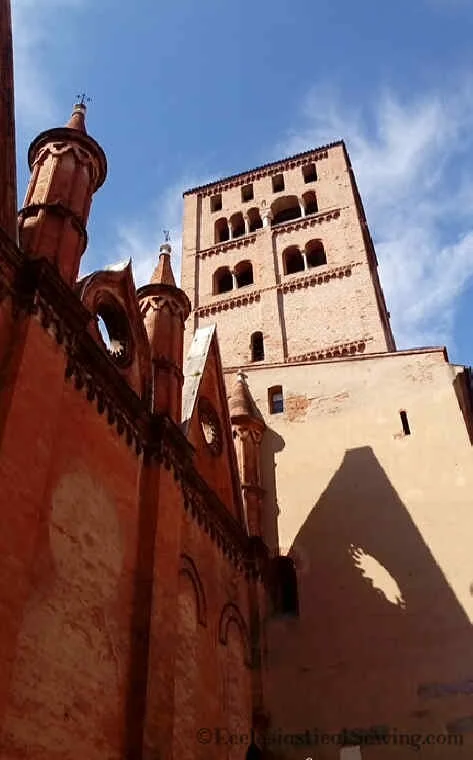
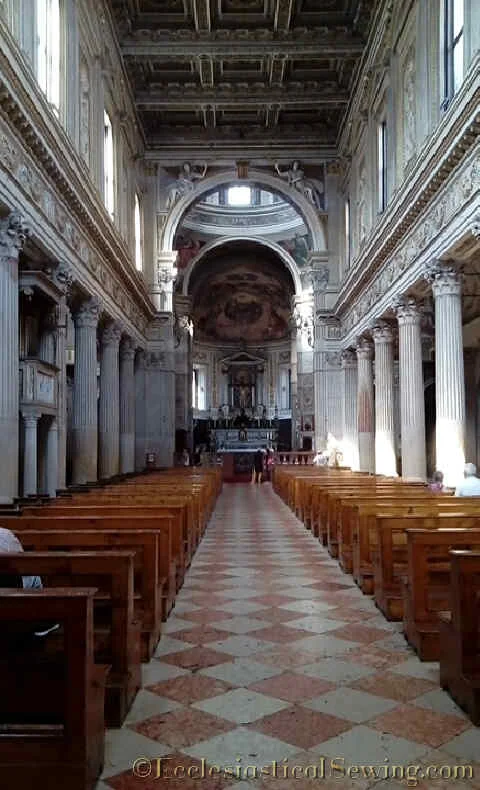
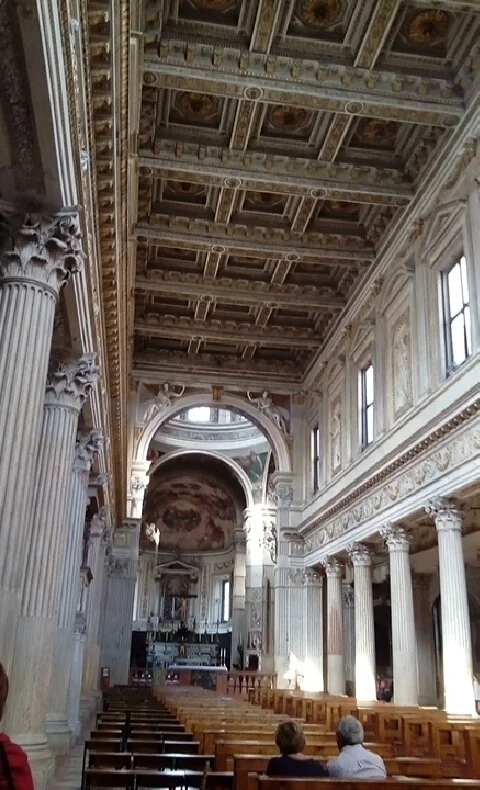
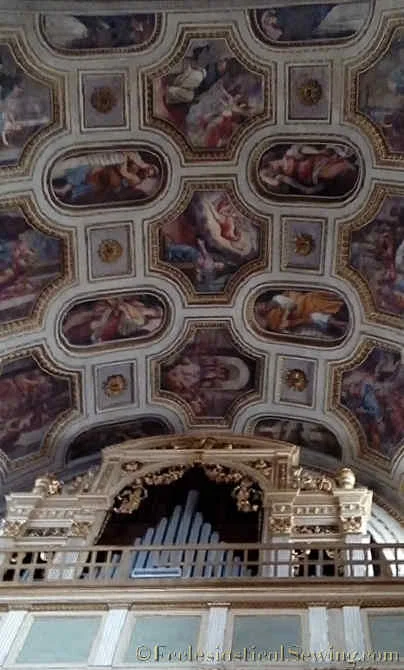
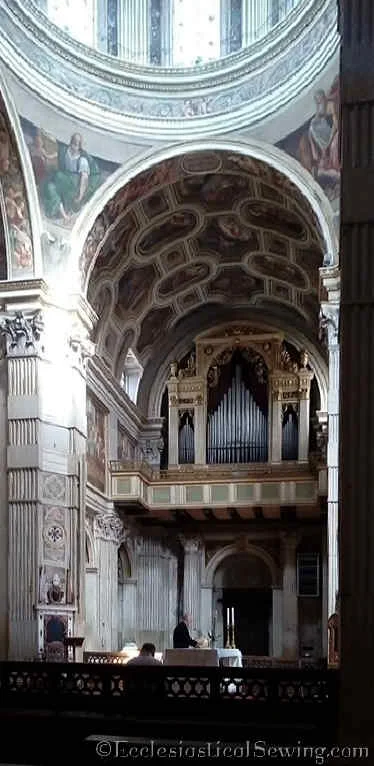
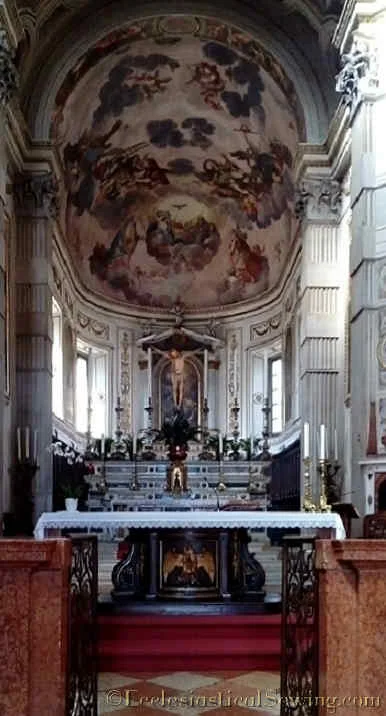
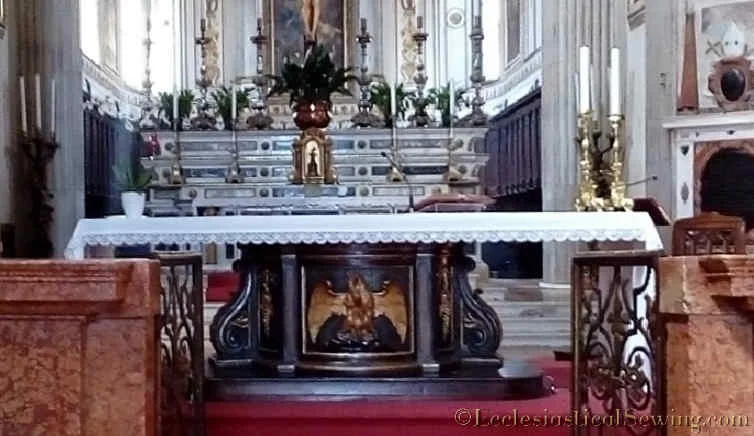
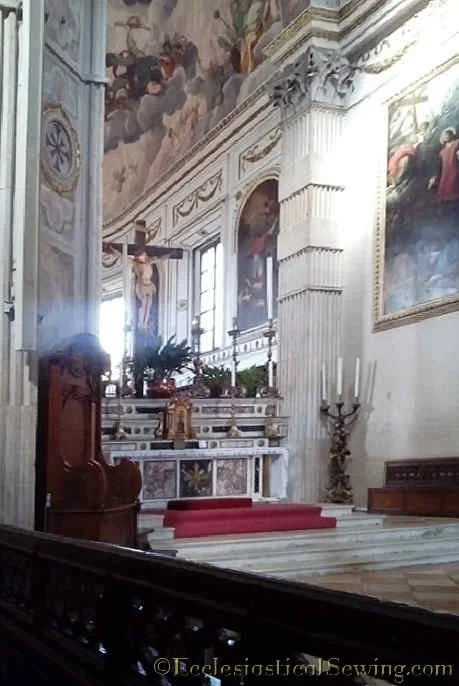
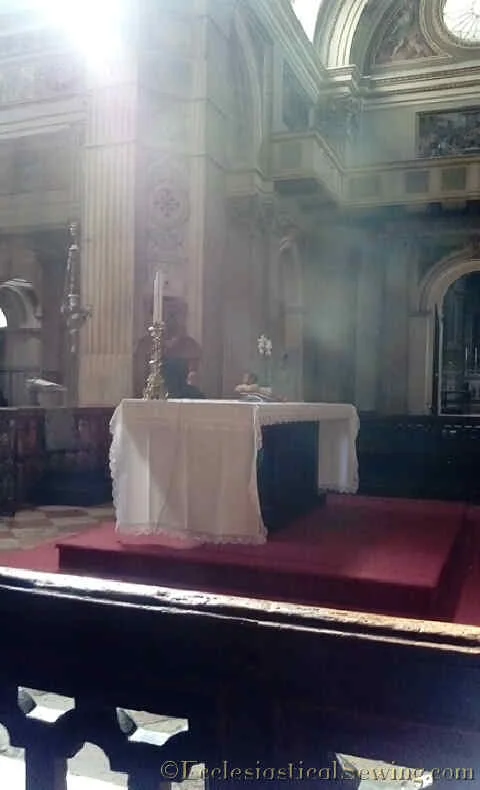
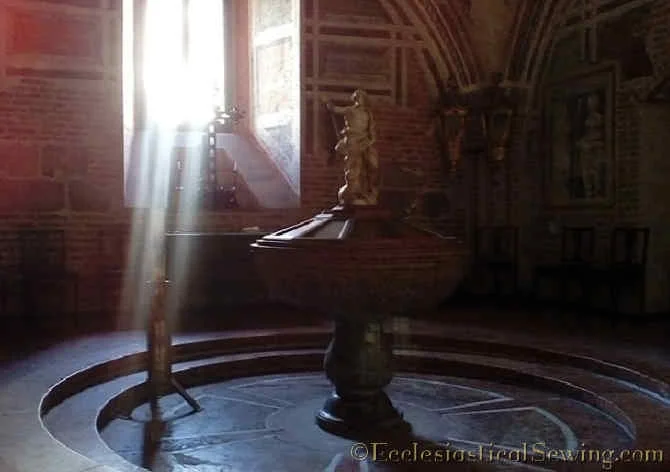
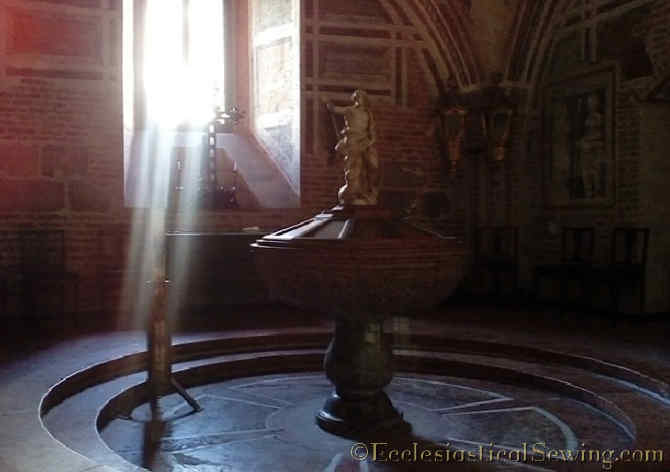
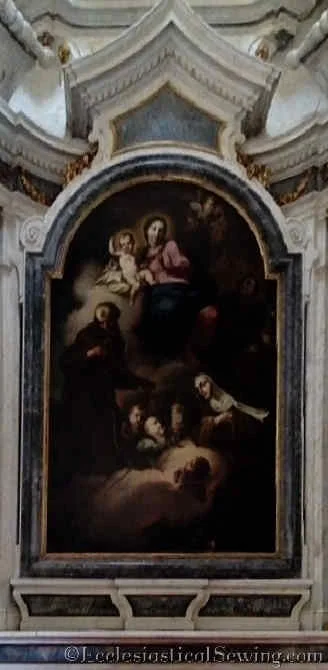
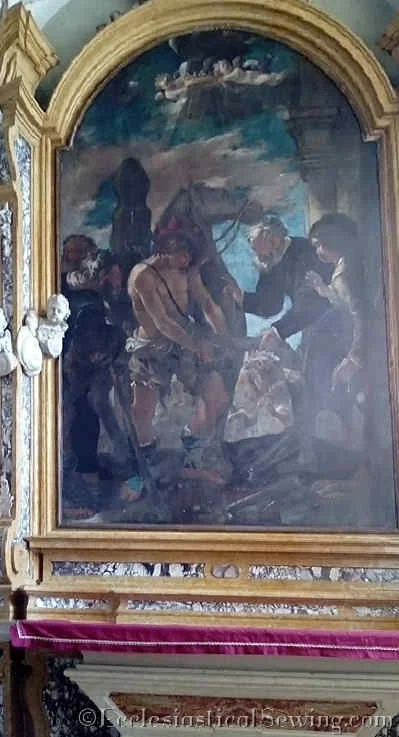






 RSS - Posts
RSS - Posts
You must be logged in to post a comment.